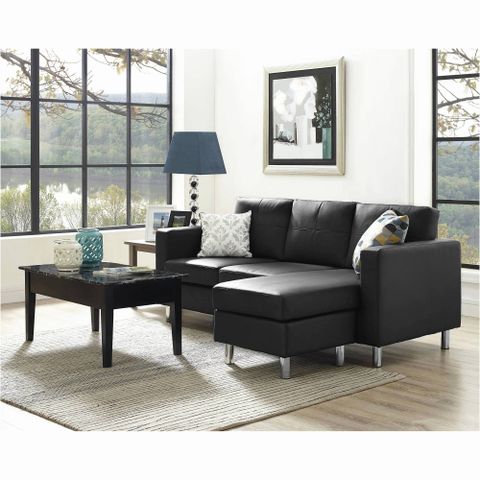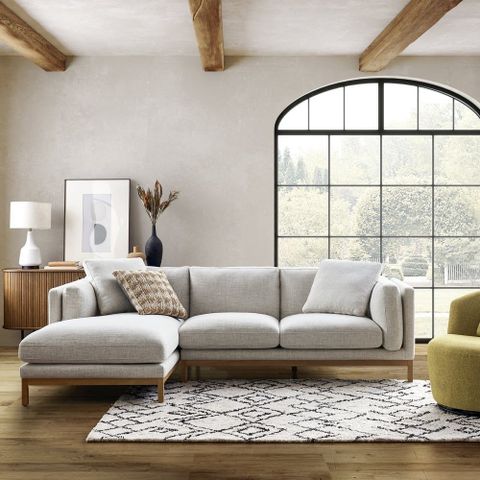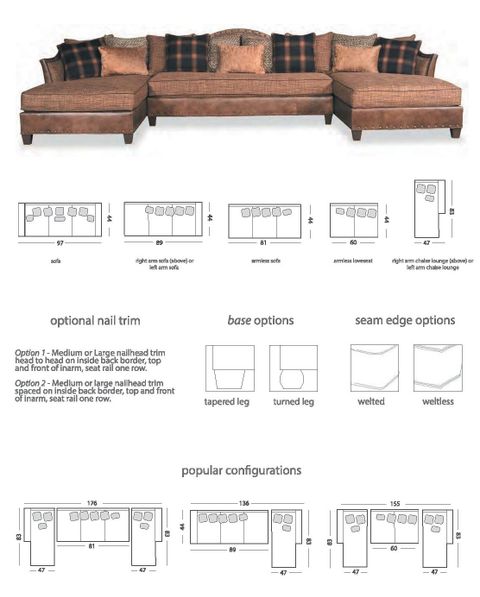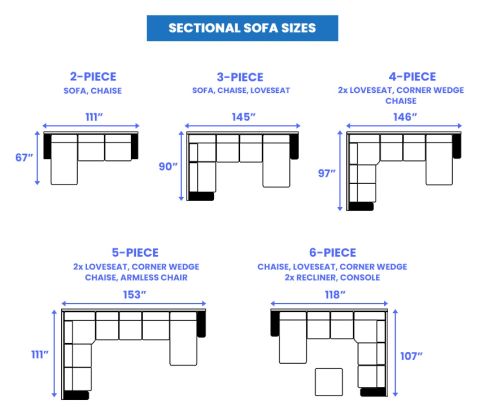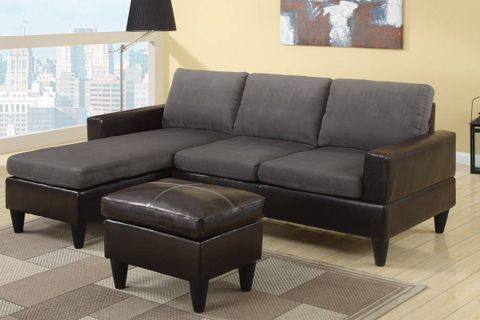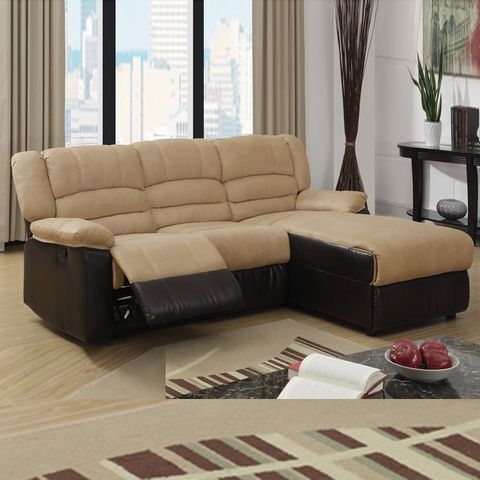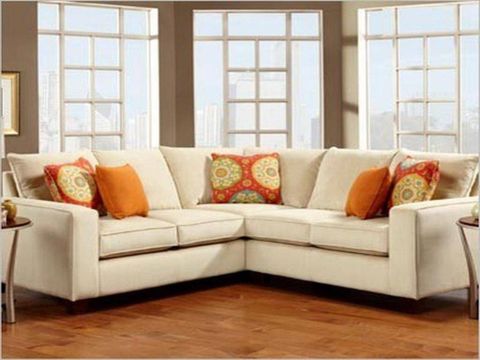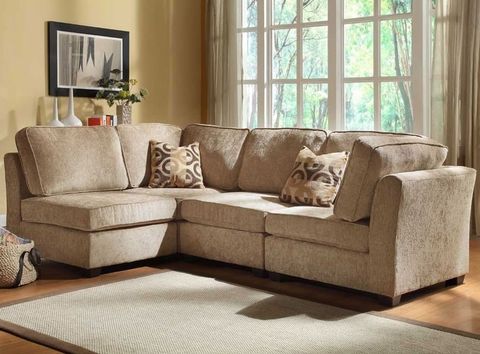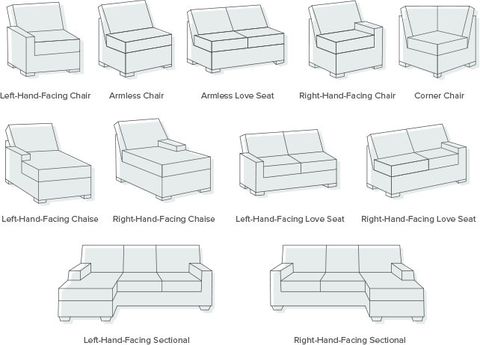Welcome, fellow tiny home enthusiasts, to a world where comfort meets conscience. Choosing the right fabric for your sectional sofa is a big decision, especially when you’re living in a compact space. Not only does it have to look good, feel great, and withstand everyday wear and tear, but it should also align with your commitment to sustainable living. This guide will walk you through the best sustainable fabric choices, helping you make an informed decision that benefits both your home and the planet. We’ll delve into the pros and cons of various materials, consider their durability, discuss style options, and offer practical tips for maintaining your eco-friendly sofa. Let’s get started and make your tiny home even greener, and more comfortable, all at once.
In the realm of tiny living, every choice matters. From the size of your kitchen table to the materials of your sofa, each selection reflects your values and impacts your environment. Your sectional sofa, often the heart of your living space, is no exception. But how do you choose a fabric that’s both stylish and kind to the planet? It’s a question many tiny home owners grapple with. This guide aims to demystify the world of sustainable fabrics, offering practical advice and insights to help you furnish your compact home with eco-conscious choices. We will explore a wide variety of materials, so you can pick what fits your needs.
Understanding Sustainable Fabrics: What Does ‘Sustainable’ Actually Mean?
Before we dive into specific fabrics, let’s clarify what ‘sustainable’ really implies. Sustainable fabrics are made using resources and processes that minimize environmental impact. This involves several factors:
- Renewable Resources: Using materials that can be replenished naturally, like plants or recycled materials.
- Low Environmental Impact: Choosing fabrics produced with minimal water usage, reduced chemical use, and lower greenhouse gas emissions.
- Ethical Production: Ensuring fair labor practices and safe working conditions throughout the supply chain.
Essentially, choosing sustainable fabrics is about making choices that help to reduce our footprint. It’s about being responsible with our resources, and caring for the planet. This is particularly important when we’re living in a smaller space. Every decision has a magnified effect.
Top Sustainable Fabric Choices for Your Sectional Sofa
Let’s explore some of the best sustainable fabric options for your sectional sofa, weighing the benefits and drawbacks of each:
Organic Cotton: Grown without pesticides or synthetic fertilizers, organic cotton is a great option. It’s comfy, breathable, and relatively durable. Look for GOTS (Global Organic Textile Standard) certification to ensure its authenticity. The main downside is that it can be prone to wrinkling and may require more frequent cleaning.
Linen: Made from flax plants, linen is incredibly strong and sustainable. It requires less water and fewer pesticides than cotton. Linen has a beautiful texture and becomes softer with each wash. It’s naturally resistant to moths, and it also has a certain amount of breathability. However, it can be pricey, and it wrinkles easily. The look of linen, however, can be amazing.
Hemp: Hemp is a fast-growing plant that requires minimal water and no pesticides. It’s extremely durable, resistant to mold and mildew, and gets softer with use. The texture can be a bit rough initially, but it softens over time. Hemp is an amazing option for your couch. The only catch is that it can be harder to find than other materials.
Recycled Fabrics: These are made from recycled materials, such as plastic bottles (rPET) or other textiles. They divert waste from landfills, reducing the demand for new resources. Recycled fabrics can be durable and water-resistant. The feel can vary, so check the specific blend. These are some of the best options out there.
Tencel/Lyocell: Made from wood pulp, primarily eucalyptus trees, Tencel and Lyocell are produced in a closed-loop system, meaning the solvents are recycled. They are soft, breathable, and have excellent drape. They’re a good choice for a comfortable sofa. However, the manufacturing process does use chemicals, so look for brands with environmentally responsible practices.
Durability and Maintenance: Keeping Your Sofa Looking Great
Durability is a key consideration, especially in a tiny home where your sofa gets a lot of use. Consider these factors when evaluating fabric choices:
- Abrasion Resistance: Measured by the Martindale test. Higher numbers indicate greater durability. For a sectional, aim for a fabric with a high abrasion resistance rating, especially if you have pets or kids.
- Stain Resistance: Look for fabrics that are naturally stain-resistant or treated with eco-friendly stain-resistant finishes. Some fabrics like linen are naturally stain resistant.
- Cleaning: Regularly vacuum your sofa to remove dust and debris. Spot-clean spills immediately. Consider using a fabric protector to add an extra layer of defense. Always follow the manufacturer’s cleaning instructions. Also, use a mild, eco-friendly cleaner whenever possible.
Remember, regular maintenance extends the life of your sofa and reduces the need for replacement, which is beneficial for the planet. And, it will help your sofa look great for a long time.
Style and Design: Finding the Perfect Fit for Your Tiny Home
Sustainable doesn’t mean sacrificing style. Here’s how to choose a sustainable fabric that complements your tiny home’s aesthetic:
- Color and Pattern: Consider the overall design of your space. Lighter colors can make a small space feel larger, while darker colors can create a cozy atmosphere. Solid colors are versatile, while patterns can add visual interest.
- Texture: The texture of the fabric can significantly impact the look and feel of your sofa. Linen and hemp have a natural, textured look. Velvets and other plush fabrics add a touch of luxury.
- Consider Your Lifestyle: If you have pets, choose a fabric that is easy to clean and resistant to pet hair. If you live in a sunny location, choose a fabric that is fade-resistant. Think about how you use your space and choose a fabric that fits your needs.
With a little planning, you can find a sustainable fabric that perfectly complements your tiny home’s style. And, it will feel great, too.
Making Informed Choices: Questions to Ask Before You Buy
Before purchasing a sectional sofa, ask these questions to ensure you’re making a truly sustainable choice:
- What is the fabric made of? Look for organic cotton, linen, hemp, recycled materials, or Tencel/Lyocell.
- Where was the fabric made? Consider the distance the fabric traveled to get to you. A shorter supply chain is generally better for the environment.
- What certifications does the fabric have? Look for certifications like GOTS, OEKO-TEX, or other credible eco-labels.
- What is the fabric’s durability rating? Make sure the fabric will withstand your lifestyle.
- What are the care instructions? Ensure you’re prepared to maintain the fabric properly.
Asking these questions will empower you to make a purchase that aligns with your values, and your space. It’s important to do your homework.
Practical Tips for Tiny Home Living: Maximizing Space and Sustainability
Here are some extra tips for integrating your sustainable sectional sofa into your tiny home:
- Choose a Multi-functional Sofa: Look for sectionals with built-in storage or pull-out beds to maximize space and functionality.
- Consider the Size: Measure your space carefully and choose a sectional that fits comfortably without overcrowding the living area.
- Use Throw Pillows and Blankets: Add throw pillows and blankets made from sustainable materials to add comfort, and style, and to change up the look easily.
- Embrace Minimalist Design: A minimalist approach helps reduce clutter and makes your living space feel more open and airy. This also helps to reduce the environmental impact of your home.
- Prioritize Natural Light: Position your sofa to take advantage of natural light, which can make your tiny home feel larger and more inviting.
By implementing these tips, you can create a stylish, functional, and eco-friendly living space that reflects your commitment to sustainable living. Also, you can be comfortable and feel good about your choices.
Choosing a sustainable fabric for your sectional sofa is an investment in both your comfort and the health of our planet. By understanding the options, considering durability and style, and asking the right questions, you can create a cozy, eco-conscious haven in your tiny home. Remember, every choice matters, and by making informed decisions, you can live a life that is both stylish and sustainable. Embrace the journey, enjoy the process, and revel in the comfort and peace of mind that comes with knowing you’re doing your part for a greener future. The perfect eco-friendly sectional is out there waiting for you. And, it’s a great time to go shopping.

